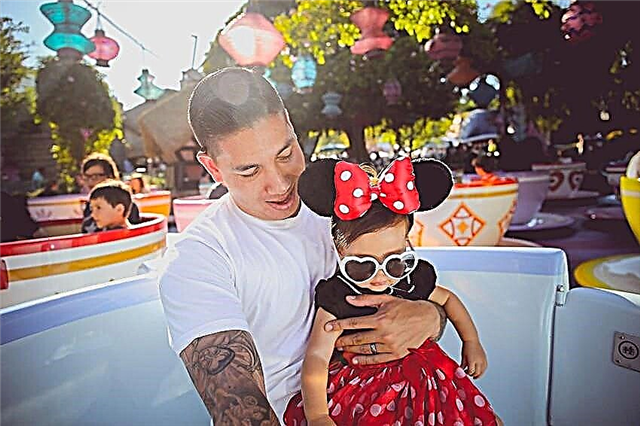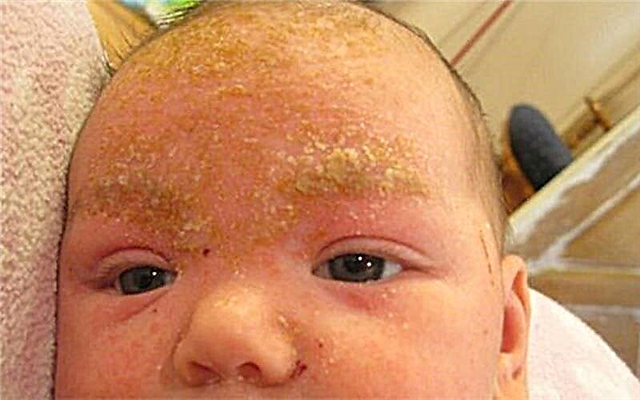Umbilical hernia in infants is a problem that occurs quite often, and therefore often becomes the subject of misconceptions and controversy. In addition to the traditional measures recommended by the pediatric surgeon, such as massage or gymnastics, parents often resort to conspiracies.

Umbilical hernia symptoms
An umbilical hernia is a hole in the muscle ring in the center of the abdomen, near the navel, caused by weakness in the umbilical muscles. It usually occurs in newborns, usually in the first days of a child's life.

Umbilical hernia symptoms in infants are easy to spot even for inexperienced parents. After the baby's umbilical cord falls off, parents may notice a slight protrusion of the belly button that appears when the baby screams or pushes. This protrusion can be easily adjusted, this procedure does not cause anxiety in the child. Over time, the hernia may grow larger. If the muscles of the umbilical ring are large (the hernia is also significant in size), you may notice that the tummy of the crumbs in the navel area becomes slightly swollen when the baby cries.
Most often, an umbilical hernia is diagnosed by a pediatric surgeon or pediatrician during an examination, which is performed when the child is one month old. When pressed into the navel, the finger falls into the abdominal cavity (with normally developed abdominal muscles, this is impossible).
Causes of the formation of an umbilical hernia
The main reason for its occurrence is heredity. In other words, if the parents of the baby had an umbilical hernia in early childhood, there is a great chance that their son or daughter will also experience it. Sometimes you can come across the opinion that the cause of the hernia is the incorrect cutting of the umbilical cord in the maternity hospital, which, of course, is not true, since the method of cutting the umbilical cord has nothing to do with the development of the abdominal muscles.
Umbilical hernia treatment
 Parents whose baby has been diagnosed with an umbilical hernia, of course, should know how to treat an umbilical hernia in a baby. Good news for them will be the news that hernias, even of a rather large size, quite often heal themselves: as the child develops, the abdominal muscles get stronger, the ring narrows and the hernia closes without special treatment, be it conservative or surgical intervention.
Parents whose baby has been diagnosed with an umbilical hernia, of course, should know how to treat an umbilical hernia in a baby. Good news for them will be the news that hernias, even of a rather large size, quite often heal themselves: as the child develops, the abdominal muscles get stronger, the ring narrows and the hernia closes without special treatment, be it conservative or surgical intervention.
In order to successfully cope with a hernia, as well as to prevent its occurrence, it is very important to provide the child with proper care.
Before each feeding, you need to spread the baby on the stomach for a short time. At the same time, the child should lie on a flat and hard surface, on a table or on a changing table, on which the diaper was placed. You need to start spreading the baby after the umbilical wound is completely healed, and, of course, in no case should you leave the baby unattended, even if the parents are absolutely sure that the baby will not turn over, because he does not know how to do this, which means he will not go anywhere.
A good effect in the prevention and treatment of umbilical hernia in babies is given by tummy massage. To do this, you need to contact a professional massage therapist (of course, after consulting a pediatrician). It is also very helpful to do the massage yourself.
The massage begins from the second week of the baby's life, provided that the umbilical wound has healed and does not bother the baby. It is recommended to carry out stroking movements (strictly clockwise, since this is how the large intestine passes through the body), the so-called counter stroking and stroking of the oblique abdominal muscles. In order to perform counter strokes, you need to hold your left hand up the right side of the tummy, and with your right hand - down the left side of the tummy (movements are performed synchronously). Stroking the oblique abdominal muscles is performed as follows: one hand should be placed on the navel area, the other should be light stroking movements. All movements should be light and enjoyable for the baby. During the massage, the baby should not cry. (How to do tummy massage correctly)

If this treatment does not help, the surgeon recommends an operation in which the umbilical ring is closed. As a rule, the operation is recommended to be performed before the child reaches the age of five.
It is also very important to remember that in the presence of an umbilical hernia, in rare cases, the muscles of the intestine may be pinched, which is dangerous and can lead to serious illnesses. Therefore, if you suspect any abdominal pain, you should see a doctor as soon as possible.



